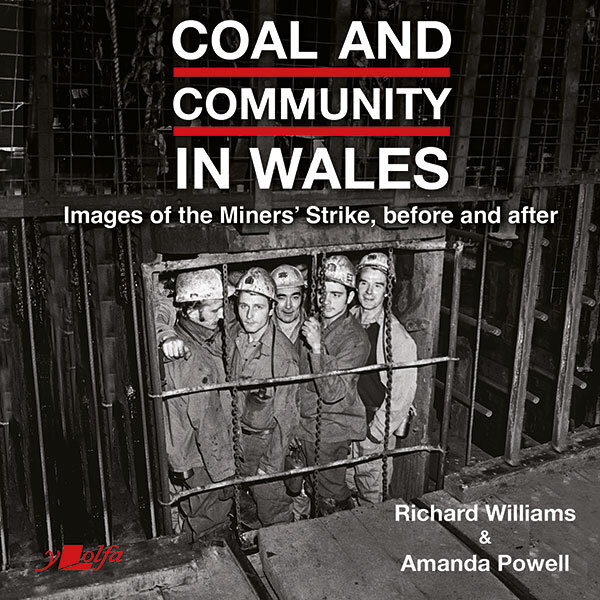Passion and defiance of Miners' Strike shared in new photography book to mark 40th anniversary
6 March 2024 will mark 40 years since the start of the Miners’ Strike, a year-long conflict that ripped apart communities in Wales. To mark the 40th anniversary, a book of compelling press photographs of the period leading up to, during and just after the industrial action, capturing the defiance, passion and solidarity experienced by miners, their families and their communities will be published.
Coal and Community in Wales – Images of the Miners’ Strike: before, during and after is by award-winning journalist Amanda Powell and freelance photographer Richard Williams. Husband and wife, the pair reported on the Miners’ Strike in south Wales first hand during the 1980s.
Richard Williams, a former Western Mail photographer and picture editor, said: “I’d realised from my teenage years that I was witnessing the decline of the mining industry around me, and had set out to document it several years before the 1984–85 strike began. I followed the strike through to the end and then photographed what happened as miners went back to work, and afterwards as the remaining pits closed down.”
The Miners’ Strike spread throughout Britain’s coalfields from 6 March 1984 and was an attempt to prevent the closure of collieries.
Led by Arthur Scargill, President of the National Union of Mineworkers (NUM), against the National Coal Board (NCB), which was a government agency, the strike was passionately supported in south Wales.
Coal and Community in Wales – Images of the Miners’ Strike: before, during and after illustrates the dying years of the mining industry in south Wales and includes the experiences of people who feature in Richard Williams’ original photographs. Richard and Amanda found that everyone they spoke to still felt as strongly today as they had 40 years ago.
Some of the most remarkable stories in the book are from a striking miner who we see trying to stop a bus carrying a strikebreaker by standing in front of it [picture in press pack]. The miner, who was also an NUM committee man, ended up in court, penalised with other pickets for breaching the peace. The court ordered him to pay £150 he could ill-afford, and in the book he talks movingly about the hardships families like his faced and the immense grief when his colliery closed down at the end of 1985.
Other notable flare-ups illustrated in the book include clashes between miners and police at Port Talbot steelworks, a location identified by NUM officials as a crucial place for secondary picketing.
Amanda Powell, who is the sister, daughter and granddaughter of former Welsh miners, was a young reporter at the time of the strike. She said, “Most of those we interviewed for the book had never had the chance to tell their stories in this way before, and they offered such new and deep insights and emotions.
What every single one of the ex-miners said to me was that they’d never again found the camaraderie they’d experienced during the mining years.”
Richard Williams said: “The Miners’ Strike was a huge news
story happening in front of your own eyes, but also a sad time as I had never
seen such anger directed at a government before. It really felt like the
country was being torn apart.”
The importance of helping younger people become aware of the struggles of the past and the way that the mining communities came together to help each other is emphasised by the authors.
Amanda Powell said: “Every major anniversary has bought coverage and new information, and I think it has made us all realise just how momentous a period this was. It changed coal-mining communities for ever, and generally not in a positive way.”
“We’re indebted to the people who answered our questions and shared their thoughts and memories, to help us in the detailed process of creating something which we hope will add a valuable insight into the story of King Coal.”
In his preface to the book, the Rt. Hon. Professor Carwyn Jones, former First Minister of Wales, writes about its significance. He says “it offers a visual history of our coalfield communities during the great strike of 1984–85. Richard has captured the essence of that time and his work will inform generations to come about a once great industry and a time of hardship and conflict that left its mark on so many.”
